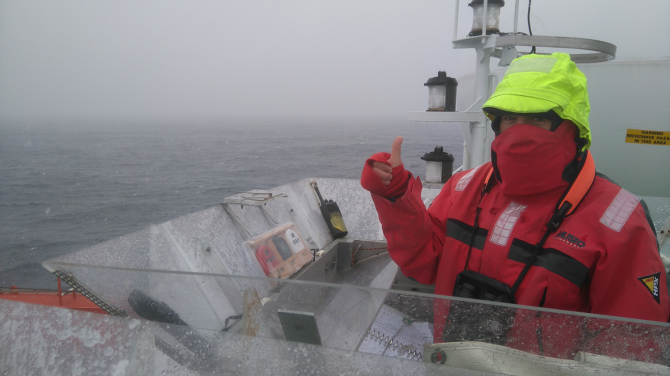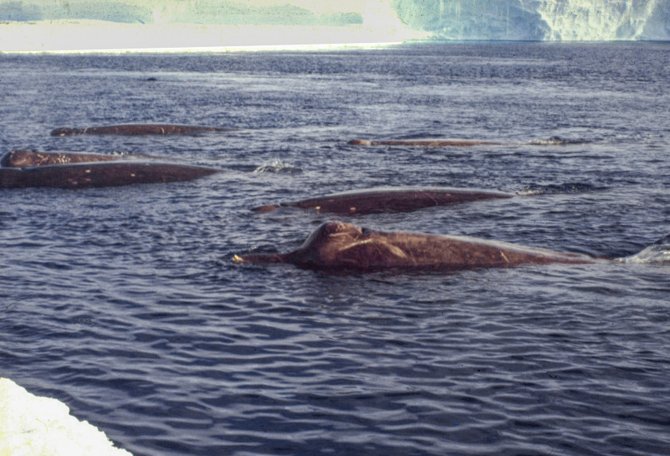
News
Rare whale species observed during recent Antarctic expedition
Research by Wageningen Marine Research and partners on the relationship between sea ice and the Southern Ocean food web investigates various components of that food web, including the so-called ‘top predators’, or seabirds and marine mammals. To map their numbers and distribution, observers count these animals during Antarctic expeditions. During the latest expedition, on board the German icebreaker Polarstern in the southern autumn of 2022, an unusual species of whale was observed: the Arnoux's beaked whale.
During the expeditions, counts were carried out in two ways. Outside, on the roof of the bridge of Polarstern, there are two wooden observation posts where Bram Feij of the Royal Netherlands Institute for Sea Research (NIOZ) and Susanne Kühn of Wageningen Marine Research can stand somewhat heated and sheltered from the wind. From here, they count the number of birds and marine mammals they encounter while sailing to estimate how many animals live in the area. When the ship is stationary, additional counts are carried out using a helicopter. During the 2022 expedition, groups of Arnoux's beaked whales were observed three times during helicopter flights. During eleven previous Polarstern expeditions in the Southern Ocean, conducted between 1988 and 2018, this species was never seen.


Unknown species
Because the Arnoux's beaked whale is rarely observed, little is known about this species. Therefore, the researchers felt it was important to publish their observations in the journal Marine Mammal Science. To put the findings in context, they compiled an overview of all sightings of this species that they could find and verify in literature, on the internet and with fellow researchers. During this search, wonderful old slides and videos from the 1980s and 1990s also came to light, made by colleagues at Wageningen Marine Research and the Alfred Wegener Institute in Germany. Combined with data from databases of international research programs focused on whales, a total of 108 sightings were found, accounting for 1,125 Arnoux's beaked whales.

New insights into distribution
The Southern Ocean is often difficult to navigate due to its sea-ice cover, especially outside the summer months. Moreover, the Arnoux's beaked whale makes long, deep dives, so it does not often appear on the surface of the water. This complicates obtaining a complete picture of its distribution and habitat. Nevertheless, the collection of all documented sightings has provided new insights. It was assumed that the Arnoux's beaked whale lives mainly in the deep parts of the oceans in the southern hemisphere, but the collected observations show that most individuals are actually seen in relatively shallow water, closer to shore. In addition, the results suggest an association with sea ice, possibly related to food or protection. There are also observations throughout the year, suggesting that the species does not migrate en masse to ice-free northern waters in winter.
EWOS expedition
The bird and mammal counts during the 2022 expedition were part of the EWOS (‘Eastern Weddell Sea Observation System’) pilot program. The aim of EWOS is to investigate how to best monitor the functioning of the Antarctic ecosystem in the Weddell Sea over a longer period of time and to standardize monitoring methods. Such research is important in establishing a Marine Protected Area (MPA) for the Weddell Sea.